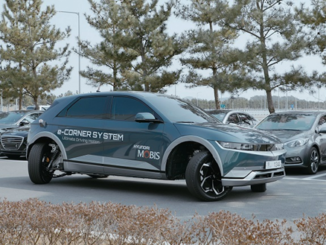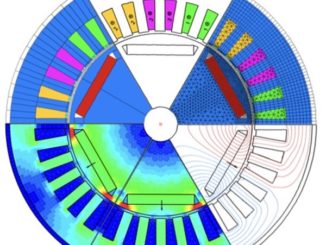
AML Superconductivity & Magnetics has reached milestones in two of its development efforts. One is for its PM-Wire which the company says represents an important new method for manufacturing magnets. The other is a U.S. Department of Energy grant to pursue development of a contact-free current transfer mechanism for electric motors and generators essentially a reimagining of the first electric homopolar motor invented by Michael Faraday.
The Melbourne, FL-based company, also known as Advanced Magnet Lab, Inc., specializes in the development of innovative magnet-based and superconducting applications.
In September, AML announced that it has completed the development and testing of a new permanent-magnet manufacturing technology, called PM-Wire. It enables a continuous high-volume production process to produce permanent magnets. The manufacturing process allows for an array of cross sections, lengths, and magnetization direction.
The magnets are made of traditional NdFeB or SmCo or other bonded or sintered material. However, PM-Wire gives engineers more flexibility in magnet sizes, shapes, and magnetic field directions. It replaces the conventional and laborious process of molding, machining, and coating PMs with a high-volume continuous production that can be highly automated.

According to Mark Senti, CEO, the process dramatically improves the yield and removes laborious steps in traditional manufacturing by enabling greater automation. It can increase permanent magnetic material yield 10% to 30% by cross-section and in long length pieces, he said. Other attributes that he cited are that it enables arbitrary spatial variation of magnetization and odd-shaped cross sections, and that it boosts the structural integrity of magnets destined for high-rpm machines and assemblies to see harsh applications.
PM-Wire is also suitable for the manufacture of low-cost Halbach arrays in motors which help concentrate the magnetic flux from the rotor into the stator, said Senti.

We have developed a number of novel, potentially world changing, solutions in the area of magnetics, but this has far exceeded our wildest expectations, stated Dr. Rainer Meinke, the inventor of PM-Wire and co-founder of AML.
Existing processes use either complex molds or expensive machining of the very hard and brittle material to achieve the desired shape, explained Meinke. Furthermore, assembly of permanent magnet components into products such as large industrial motors and generators is difficult and dangerous due to the enormous repulsive or attractive magnetic forces that must be overcome. This overcomes many inherent issues with conventional methods. The process allows mass-produced, cost-effective permanent magnet products, which are more robust, easily assembled into products and enables new wire-like, shape forms.
The award from DOE, for $541,184, came in November. AML was funded to develop a reliable, contact-free current transfer mechanism from a stationary to a rotating electrode to allow direct current electrical machines such as motors, and generators to achieve unprecedented power and torque density. This technology, a reimagining of the first electric homopolar motor invented by Michael Faraday, would provide current transfer without the need for the costly sliding contacts, brushes, and liquids that have limited DC electrical engine efficiency and lifetime. AMLs contact-free current transfer would achieve 99% efficiency in DC electrical motors with 5-10 times the power and torque densities available in existing DC technologies.
To learn more, visit http://amlsuperconductivity.com/



